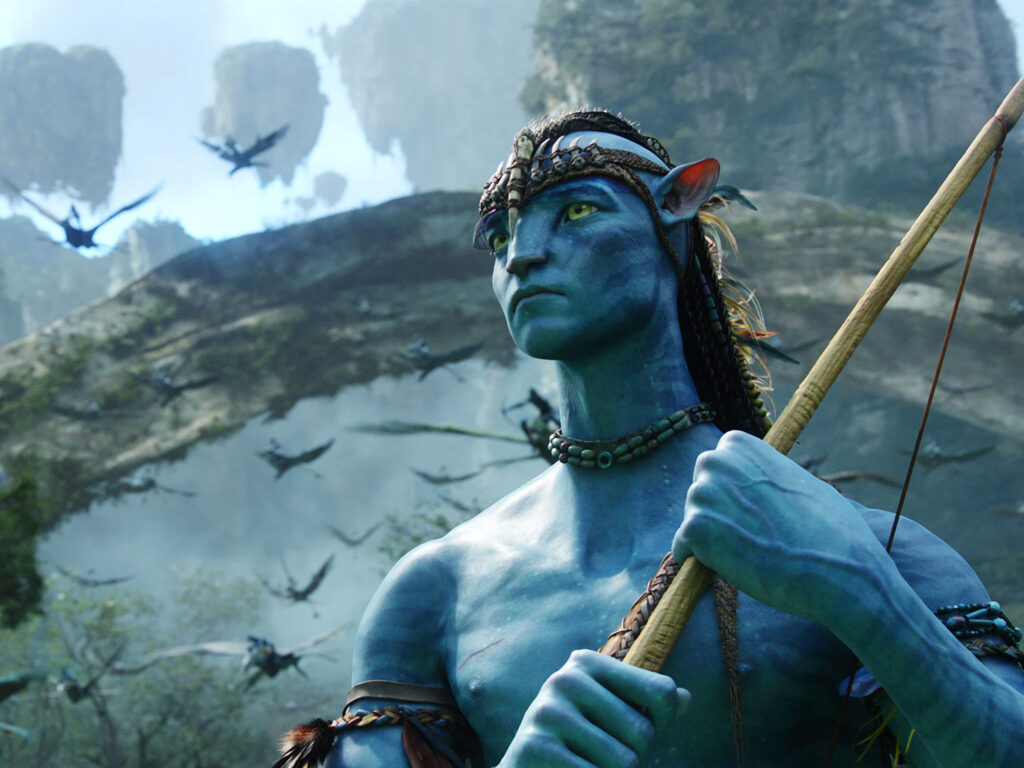Avatar’s Pandora is James Cameron’s boldest endeavor to date in conveying the potency of film. Can you abandon everything you know and appreciate a movie in a style that’s become increasingly tricky in this world of so many diversions? Cameron kept pushing the boundaries of his faith in technology as it progressed, experimenting with 3D, High Frame Rate, and other tools that weren’t accessible when he started his career.
In Avatar: The Way of Water, Cameron takes this exploration further. Thankfully, it’s not simply a retread of the first film, instead touching on themes of family, as well as the previously explored themes of nature, the Gaia theory, and community. Like the first film, the sequel also struggles to tell an engaging story, especially with a runtime as long as 190 minutes. Thankfully, the bleeding-edge visuals are there to overwhelm any concerns you may have about storytelling. For a movie that finished filming more than half a decade ago, Avatar: The Way of Water blows every other modern blockbuster away in terms of visuals.
This is the kind of film that needs to be seen in IMAX, almost literally so, because that’s where you’ll see the film’s HFR (High Frame Rate) technology in action. The analogy that immediately came to my mind is seeing a very high-budget PS5 game being played on the screen at 60 frames per second. This kind of smoothness can be jarring for those who are more used to the slower, ‘cinematic’ 24 frames per second.
Set a number of years after the first film, we catch up with Jake Skully (Sam Worthington) and Neytiri (Zoe Saldana) as they raise a family of two boys and two daughters, one of whom is adopted. Their domestic bliss is abruptly ended when the humans return to Pandora and their descent razes a significant area of a forest. Jake organizes a series of raids against the humans, until a squad of Avatars, led by a clone of Col. Miles Quaritch (Stephen Lang) briefly captures his family. Worried for his family’s safety, Jake decides to uproot his family and reallocate to the reefs, where the water-based Metkayina tribe is located. The Sully family readjusts to their new home, but trouble is still brewing in the distance.
You see, Spider, the human son of Quaritch who grew up with the Sullys, has been captured by Quaritch’s team, and they convince him to cooperate with them as they search for Jake’s current location.

Cameron makes the smart choice of focusing on the next generation of the Sully family, spending a lot of screentime on the middle children, Lo’ak (Chloe Coleman) and Kiri (Sigourney Weaver).
Lo’ak is the perennial disappointment trying to find his identity, while Kiri, the daughter of Grace’s avatar from the first film, struggles to understand her unique connection to Pandora, and by extension, why she’s different from everyone else. Spider also gets an arc of divided loyalties as he bonds with Quaritch but sees what he and his team does to the Na’vi firsthand. Lo’ak’s arc is handled the best here, although it still feels more generic than organic. Kiri’s arc doesn’t really progress as it is forced to move from point A to B, and Spider’s arc resolves in an anime protagonist-like move that’s sure to frustrate many viewers.
Jake and Neytiri’s characters regress to playing the parental role through most of the film, and that’s not entirely a bad thing, at least in Jake’s case. Jake is still a generic Marine and tough guy, but his role as the overprotective father plays off nicely against the children, especially Lo’ak, who bristles under his instructions. Neytiri gets to display more primal emotions than Jake, but she’s also relegated to being the more emotional one whenever something bad happens to Pandora or the Sully family.
Avatar: The Way of Water dips its toes even deeper into environmentalist fable than its predecessor, although the way it’s done is sometimes as subtle as dropping an anvil on someone’s head.
There’s a whole arc about Payakan, a sentient whale-like creature who’s an outcast among his species for killing humans, and how Lo’ak comes to bond with him. Payakan eventually gets to take his revenge against the humans, and it’s as gleefully wishful as you can expect. Actual whales, unfortunately, can’t usually get the satisfaction of killing their whalers.
Avatar: The Way of Water decides to tell a smaller story than the first film, setting up multiple plot threads for its sequel. Cameron has already expressed his desire to feature ‘fire Na’vis’ in the third film, who will reportedly be not as nice as the other tribes we have seen so far. Let’s hope that story can stand on its own instead of falling apart as a derivative take on the ‘factions based on the classical elements’ worldbuilding that Avatar: The Last Airbender has already done so well.